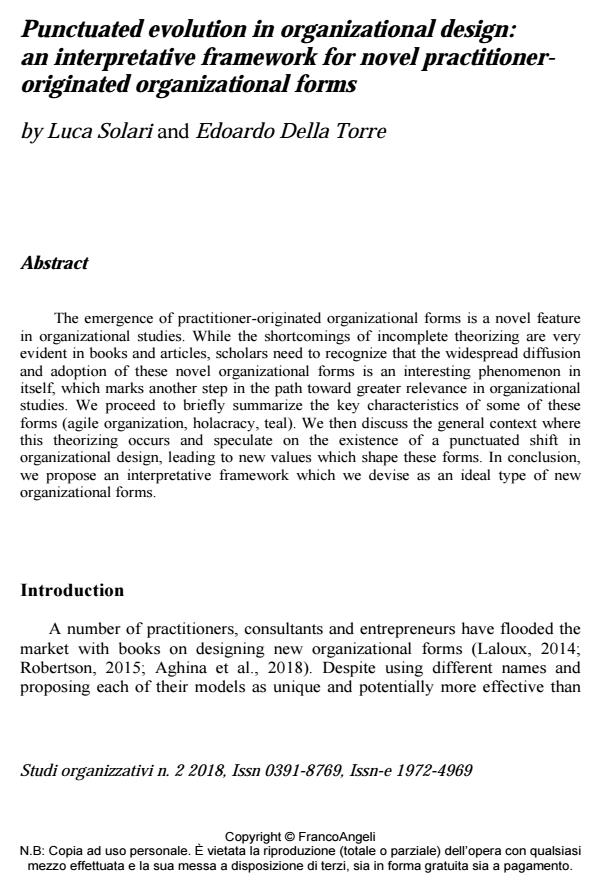Punctuated evolution in organizational design: an interpretative framework for novel practitioneroriginated organizational forms
Titolo Rivista STUDI ORGANIZZATIVI
Autori/Curatori Luca Solari, Edoardo Della Torre
Anno di pubblicazione 2019 Fascicolo 2018/2
Lingua Inglese Numero pagine 26 P. 177-202 Dimensione file 272 KB
DOI 10.3280/SO2018-002008
Il DOI è il codice a barre della proprietà intellettuale: per saperne di più
clicca qui
Qui sotto puoi vedere in anteprima la prima pagina di questo articolo.
Se questo articolo ti interessa, lo puoi acquistare (e scaricare in formato pdf) seguendo le facili indicazioni per acquistare il download credit. Acquista Download Credits per scaricare questo Articolo in formato PDF

FrancoAngeli è membro della Publishers International Linking Association, Inc (PILA)associazione indipendente e non profit per facilitare (attraverso i servizi tecnologici implementati da CrossRef.org) l’accesso degli studiosi ai contenuti digitali nelle pubblicazioni professionali e scientifiche
The emergence of practitioner-originated organizational forms is a novel feature in organizational studies. While the shortcomings of incomplete theorizing are very evident in books and articles, scholars need to recognize that the widespread diffusion and adoption of these novel organizational forms is an interesting phenomenon in itself, which marks another step in the path toward greater relevance in organizational studies. We proceed to briefly summarize the key characteristics of some of these forms (agile organization, holacracy, teal). We then discuss the general context where this theorizing occurs and speculate on the existence of a punctuated shift in organizational design, leading to new values which shape these forms. In conclusion, we propose an interpretative framework which we devise as an ideal type of new organizational forms.
Luca Solari, Edoardo Della Torre, Punctuated evolution in organizational design: an interpretative framework for novel practitioneroriginated organizational forms in "STUDI ORGANIZZATIVI " 2/2018, pp 177-202, DOI: 10.3280/SO2018-002008